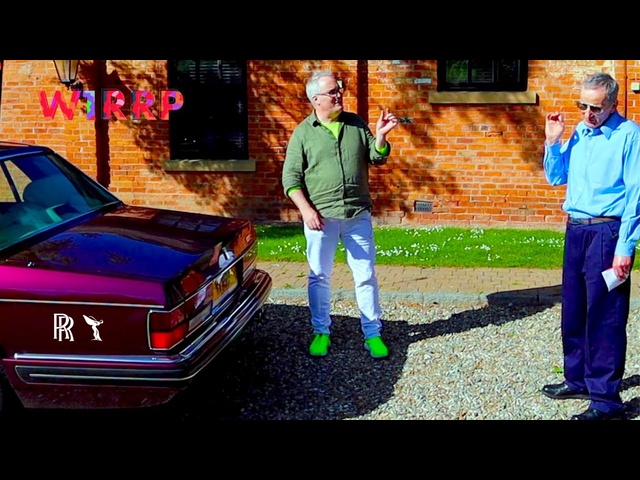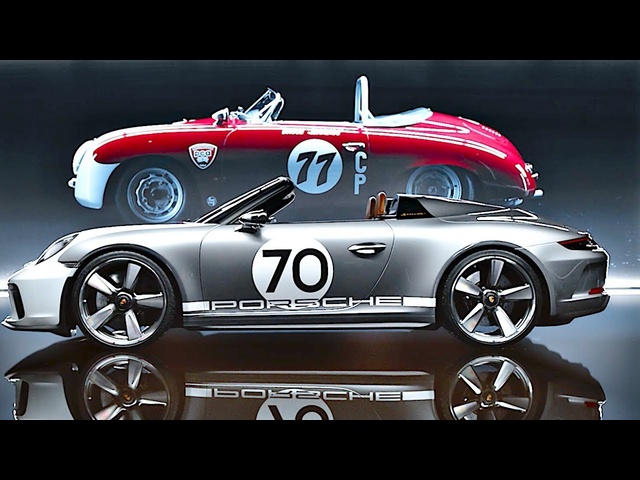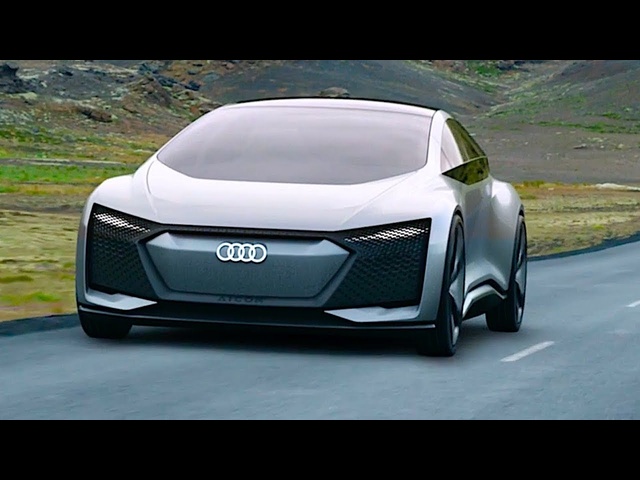Views: 8437
Rolls Royce Tow Hitch Video Retractable Powered Tow Hook Trailer Hitch Tow Bar Rolls Royce Options
Powered Rolls-Royce Tow Hitch + Front Winch + RR Cullinan Off Road Video Watch in UltraHD + SUBSCRIBE #CARJAMTV
CARJAM TV - Subscribe Now
Website: http://www.carjamtv.com
CARJAM TV: WORLD’S BEST CAR VIDEOS
A tow hitch (or tow bar) is a device attached to the chassis of a vehicle for towing or a towbar to an aircraft nose gear, or paired main gears. It can take the form of a tow ball to allow swiveling and articulation of a trailer, or a tow pin, or a tow hook, with a trailer loop, often used for large or agricultural vehicles where slack in the pivot pin allows similar movements. Another category is the towing pintle used on military vehicles worldwide.
In North America the vehicle attachment is known as the trailer hitch. Trailer hitches come in two main configurations: receiver type and fixed-drawbar type. Receiver-type hitches consist of a portion that mounts to the frame of the vehicle that has a rearward-facing opening that accepts removable ball mounts, hitch bike racks, cargo carriers, or other hitch mounted accessories. Fixed-drawbar hitches are typically built as one piece, have an integrated hole for the trailer ball, and are generally not compatible with aftermarket hitch accessories.
Additionally, many pickup trucks come equipped with one to three mounting holes placed in the center area of the rear bumper to accommodate the mounting of trailer tow balls. The ones on the extreme left or right are often used by drivers in rural areas who tow wide farm equipment on two-lane roads. The far side mounting allows for the item (trailer, etc.) being towed to be further away from the opposite side of the road (oncoming traffic, etc.). Caution must be taken when using the bumper of a pickup truck for towing rather than using a frame mounted receiver hitch, as the bumper does not provide for as much strength and therefore is generally used to tow lighter loads. Weight ratings for both bumper-mounted and frame-mounted receiver hitches can be found on bumper of pickup trucks (for bumper-mounted tow balls) and on the receiver hitch (for frame-mounted receiver hitches). Many pickup trucks without frame-mounted receiver hitches often use the rear bumper, especially if the pickup truck is a light duty (not full size) pickup truck.
For flat deck and pickup trucks towing 10,000-to-30,000-pound (4,500 to 13,600 kg; 4.5 to 13.6 t) trailers there are fifth wheel and gooseneck hitches. These are used for agriculture, industry and large recreational trailers.
Front trailer hitches are also widely used on pickup trucks and full size SUVs for multiple purpose. A front mounted hitch can accommodate additional truck equipment such as front mount bike carriers, fishing / hunting gear, winches, step plates, snow plows and more. It also allows a driver to temporarily maneuver a trailer with better visibility into any convenient place. Front trailer hitches are mounted directly to the frame a vehicle to ensure reliable connection. Front hitches are equipped with standard size receiver tubes to accommodate all universal hitch mount equipment.
In the European Union, towbars must be a type approved to European Union directive 94/20/EC to be fitted to vehicles first registered on or after 1 August 1998.[3]
The ISO standard tow ball is 50 mm (1 31⁄32 in) in diameter and conforms to a standard BS AU 113b (replaced by BS ISO 1103:2007). The ISO standard has been adopted in most of the world outside North America.
There are two main categories of ISO tow ball: the flange fitting and the swan-neck which has an extended neck fitting into the tow-bracket. Swan-neck tow balls are often removable to avoid the inconvenience of a tow ball protruding from the vehicle when not required. Some manufacturers are introducing retractable tow balls as an option.
Across Europe around 25% of vehicles have tow balls fitted—but there are distinct regional variations, being more common in Benelux and Scandinavia. In Sweden, around 2.2 million cars of around 4.3 million (just over 50%) have tow balls.[4] In the United Kingdom the popularity of caravans is responsible for a high percentage number of 4x4 (SUV) type vehicles being fitted with tow hitches.
http://en.wikipedia.org/wiki/Tow_hitch
CARJAM TV - Subscribe Now
Website: http://www.carjamtv.com
CARJAM TV: WORLD’S BEST CAR VIDEOS
A tow hitch (or tow bar) is a device attached to the chassis of a vehicle for towing or a towbar to an aircraft nose gear, or paired main gears. It can take the form of a tow ball to allow swiveling and articulation of a trailer, or a tow pin, or a tow hook, with a trailer loop, often used for large or agricultural vehicles where slack in the pivot pin allows similar movements. Another category is the towing pintle used on military vehicles worldwide.
In North America the vehicle attachment is known as the trailer hitch. Trailer hitches come in two main configurations: receiver type and fixed-drawbar type. Receiver-type hitches consist of a portion that mounts to the frame of the vehicle that has a rearward-facing opening that accepts removable ball mounts, hitch bike racks, cargo carriers, or other hitch mounted accessories. Fixed-drawbar hitches are typically built as one piece, have an integrated hole for the trailer ball, and are generally not compatible with aftermarket hitch accessories.
Additionally, many pickup trucks come equipped with one to three mounting holes placed in the center area of the rear bumper to accommodate the mounting of trailer tow balls. The ones on the extreme left or right are often used by drivers in rural areas who tow wide farm equipment on two-lane roads. The far side mounting allows for the item (trailer, etc.) being towed to be further away from the opposite side of the road (oncoming traffic, etc.). Caution must be taken when using the bumper of a pickup truck for towing rather than using a frame mounted receiver hitch, as the bumper does not provide for as much strength and therefore is generally used to tow lighter loads. Weight ratings for both bumper-mounted and frame-mounted receiver hitches can be found on bumper of pickup trucks (for bumper-mounted tow balls) and on the receiver hitch (for frame-mounted receiver hitches). Many pickup trucks without frame-mounted receiver hitches often use the rear bumper, especially if the pickup truck is a light duty (not full size) pickup truck.
For flat deck and pickup trucks towing 10,000-to-30,000-pound (4,500 to 13,600 kg; 4.5 to 13.6 t) trailers there are fifth wheel and gooseneck hitches. These are used for agriculture, industry and large recreational trailers.
Front trailer hitches are also widely used on pickup trucks and full size SUVs for multiple purpose. A front mounted hitch can accommodate additional truck equipment such as front mount bike carriers, fishing / hunting gear, winches, step plates, snow plows and more. It also allows a driver to temporarily maneuver a trailer with better visibility into any convenient place. Front trailer hitches are mounted directly to the frame a vehicle to ensure reliable connection. Front hitches are equipped with standard size receiver tubes to accommodate all universal hitch mount equipment.
In the European Union, towbars must be a type approved to European Union directive 94/20/EC to be fitted to vehicles first registered on or after 1 August 1998.[3]
The ISO standard tow ball is 50 mm (1 31⁄32 in) in diameter and conforms to a standard BS AU 113b (replaced by BS ISO 1103:2007). The ISO standard has been adopted in most of the world outside North America.
There are two main categories of ISO tow ball: the flange fitting and the swan-neck which has an extended neck fitting into the tow-bracket. Swan-neck tow balls are often removable to avoid the inconvenience of a tow ball protruding from the vehicle when not required. Some manufacturers are introducing retractable tow balls as an option.
Across Europe around 25% of vehicles have tow balls fitted—but there are distinct regional variations, being more common in Benelux and Scandinavia. In Sweden, around 2.2 million cars of around 4.3 million (just over 50%) have tow balls.[4] In the United Kingdom the popularity of caravans is responsible for a high percentage number of 4x4 (SUV) type vehicles being fitted with tow hitches.
http://en.wikipedia.org/wiki/Tow_hitch
Make: Rolls Royce
More by CARJAM TV
-
 Rolls Royce Boarding School Trunk Test ...
Rolls Royce Boarding School Trunk Test ...
 Rolls Royce
Views: 541
Rolls Royce
Views: 541 -
 Porsche Speedster 911 GT3 2019 Commercial World ...
Porsche Speedster 911 GT3 2019 Commercial World ...
 Porsche
Views: 3776
Porsche
Views: 3776 -
 Audi Aicon A8 Electric Autonomous Car World ...
Audi Aicon A8 Electric Autonomous Car World ...
 Audi
Views: 4803
Audi
Views: 4803 -
 BMW M3 F80 Price $60K 2014 Walk Around HD Driving ...
BMW M3 F80 Price $60K 2014 Walk Around HD Driving ...
 BMW
Views: 5490
BMW
Views: 5490





